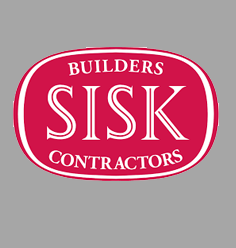Does workforce stress influence safety culture?
April is Stress Awareness Month. New analysis of Safety Diagnostics Industry Normative data reveals the impact of workforce stress on safety culture.
Fragile mental health and in particular stress, are recognised as key risks in workforce wellbeing in the UK construction industry. Stress and anxiety are key drivers for sickness absence in the industry and the toll on individual workers wellbeing can be severe. Less well understood is the impact of stress on worker self-esteem and the consequent knock-on for workplace culture. Elevated stress levels appear to significantly alter workers’ perceptions of empowerment, fairness, and respect, eroding the fundamental esteem factors that characterise positive workplace culture. New analysis of stress factors within the Safety Diagnostics database reveals a unique dynamic for construction industry workers, providing fresh insight into behavioural trends that diverge from industry norms.
Stress erodes worker empowerment
The Safety Diagnostics analysis clearly indicates that when workers report high stress levels, their sense of empowerment declines. For example, only 54% of individuals at high risk from stress feel consistently empowered to stop work if unsafe, compared to 71% of those reporting low risk. This finding underscores the urgent need to address stress to ensure every worker feels confident in making safe decisions.
Fairness and respect are essential for a healthy culture
Respect and fairness are fundamental to a thriving work environment. The data analysis reveals that only 34% of workers under high stress feel that everyone is treated with equal fairness, in contrast to 58% among those with low stress levels. Additionally, individuals experiencing high stress are less likely to feel that their ideas are listened to and acted on, while a higher percentage report being blamed unfairly. These trends demonstrate that stress not only affects safety behaviours but also erodes the essential values of fairness and respect on site.
Valuing workers at every level
The research further indicates that perceptions of support from management have a crucial impact on overall well-being. Only 64% of those experiencing high stress feel valued by line managers, compared to 84% in low-stress environments. Similar patterns emerge in relationships with peers and senior management, reinforcing the importance of creating supportive environments where every worker is respected.
A commitment to safer, healthier workplaces
The findings from Safety Diagnostics provide objective insights that help shape positive project cultures. The evidence demonstrates that addressing stress and mental health is not solely about improving safety metrics; it is about building environments where fairness, respect, and empowerment are integral. By implementing targeted support measures such as helplines, mental health first aiders, and specialised supervisor training, a culture can be fostered where every construction site becomes a model of safety and mutual respect.
Safety Diagnostics surveys offer an independent insight into culture and behaviours on site and provide a robust benchmark for objective evaluation.
Research is based on more than 60,000 individual cases drawn from projects across the UK construction industry.
Learning outcomes
• High risk stress environments severely impact safety culture
• Stressed workers are significantly less empowered to enact safe behaviours
• Direct correlation between peer and supervisor support and stress levels
• Workers at high risk from stress are less likely to view their workplace as fair
• Stressed workers are less likely to feel valued and respected by workmates and line managers
Tables









